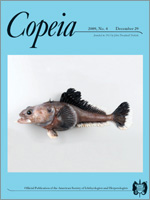Scorpaeniform fishes of the family Liparidae (snailfishes) are anatomically distinctive, morphologically variable, ecologically diverse, and globally distributed. Liparids have both boreal and austral centers of diversity; they are one of the most speciose fish families in the North Pacific Ocean, and are the most speciose fish family in the Antarctic Southern Ocean. In a previous communication we described the nervous and sensory systems of Paraliparis devriesi from the Ross Sea of Antarctica. Our goal with the present communication is to expand and generalize these findings by examining the nervous and sensory systems of two North Pacific/sub-Arctic species, P. pectoralis and P. ulochir, which live along the northwestern coast of North America and in the Bering Sea. We find that the brains and sensory systems of all three species are grossly similar, more similar to each other than to species outside the family. These brains are derived. In response to the cold and dark conditions of the deep sea, species of Paraliparis have an augmented olfactory system, a large cephalic lateral line system, an enhanced trunk somatosensory system, and an enlarged motor coordination (cerebellar) system. But they also have a reduced, rod-only visual system, a highly reduced trunk lateral line system, and have lost some portion of the higher order processing networks for these systems (in the tectum, telencephalon, and inferior lobes). It is these reductions that give the overall impression (confirmed by outgroup comparison) that the brains of these species are comparatively small. The genus Paraliparis represents a successful evolutionary lineage by the criteria of both species diversity (106 currently described species) and distribution (global, among deep-sea [>200 m] marine environments). This evolutionary success appears to be tied to the ability to inhabit the deep-sea, the world's largest living space. For Paraliparis, the loss of brain mass is one tradeoff for occupying the world's largest habitable space and the evolutionary advantages this confers.
How to translate text using browser tools
29 December 2009
Nervous and Sensory Systems in Sub-Arctic and Antarctic Snailfishes of the Genus Paraliparis (Teleostei: Scorpaeniformes: Liparidae)
Michael J. Lannoo,
Joseph T. Eastman,
James W. Orr
ACCESS THE FULL ARTICLE





